Catch-up from Kiritappu
Having negotiated the port city of Kushiro, I stocked the barrel with a few extra supplies. At one o'clock the fog cleared and I sailed zigzags for 3 hours, making 2.7 nautical miles, before being becalmed again and having to paddle to reach the small port of Katsurakoi.
Chironoura to Katsurakoi
Rain was forecast for the night and I was a bit deflated with progress. The relentless foul current makes light winds doubly problematic. Also complicating matters are the "nets" (we are back to the extra long, extra tight kombu [kelp] lines, which are not practical to hurdle) and the weed (seagrass that catches daggerboard and fin). The weed is worse inshore, but offshore the current is much stronger. The lesser of these two evils, in light winds, is the weed. The foils drag streamers that eventually become a birds nest. The drag loads up the sail and is felt in my complaining fingers. The foils need clearing of weed many times. More than a hundred times, I would guess. The circulation of the ocean currents also suggests that I am sailing the wrong way round Hokkaido! I'd recommend the other way!
Koji Nakagawa san said hello at the port and lifted my mood. I reflected on how a simple intervention can make such a difference! We should all remember this. We all have it within our power to transform someone's day. It starts with a hello, and a willingness to take a time-out from whatever supposed priorities we are occupied with or hostage to. My phone was on charge and unavailable, so we communicated without the assistance of Google Translate, which facilitated connection more effectively than when relying on technology. Mrs Nakagawa came to join us with a atlas, and we explored that together in what counted as a conversation.
Pontomari
The next day had similar wind, less swell, and no fog. It was slow but I enjoyed sailing with a view. More hours on the water helped me zigzag to about 7 nm. Then the wind dropped and I paddled to finish the day at a small kombu harvesting community. There is no port, but instead a beach protected from the waves by a double-dash of concrete blocks.
Beach landings have been the exception on this journey. I had been tempted to stop one beach earlier, but cautioned myself that it was unwise to stop at a beach that had no protection from the swell. Instead, I walked to the beach to soak in the atmosphere. A nature rich valley meets the beach and there are three cabins of wood and corrugated iron, that are no longer inhabited, but that no-one has moved out from. All the furnishings are present, including delicate items such as crockery for tea, and clocks with time stood still. Presumably, these collapsing homes are what remain of past lives. Evidence that whatever we build is fleeting and ephemeral. No matter the construction - a civilisation, an empire or a single life - none will endure. For me it was a reminder to focus not on building, but on loving, because that is what is truly meaningful. If you have a phone call or other connection to make, make it now!
Akkeshi
A good day, mostly paddled, but with wind at the end to reach Akkeshi, which is famous for oysters, whisky, and ferocious swarms of mosquitoes! I was low on food and restocked here.
Kiritappu
At last, some wind, and it is helpful to complete a hop along a wild and exposed stretch of cliff-lined coast. Even here there are some nets to negotiate. The inshore route is not viable in today's conditions (chop and swell rebounding, and the high ground a block to the wind) but the nets have a kind of door at half distance from each end and today I can use those. The doors are marked by flags. Between the flags there are three lines instead of one, but they are without buoys and consequently less taut, so if the wind is from behind you can force your way over them.
A route inside of an island and through a helpful cut-through make for a fun and easy end to the day's sail.
The evening was very wet and windy. I set my roof low and chose well draining land. It was a better night than the previous one of mosquito hell.
This morning the coastguard came to visit me. They have been tracking me (thanks YB Tracking) and wished to brief me on the Nemuro peninsula rounding and subsequent coastline. Russia is very close and the waters are disputed, the current is strong and against me, the nets and other aquaculture will be frequent, ahead are more hotspots for fog... This isn't easy! We reviewed my comms and safety gear. The coastguard visit was 100% amicable and I appreciate their support to help me continue in a safe and responsible manner. Keys takeaways:
- Wear a life jacket at all times. (My unsinkable board, connected with a leash to my person, is my 300-litre buoyancy aid.)
- Communication methods physically attached. (I am textbook compliant on this one.)
- Emergency call to Japan Coastguard, dial 118. (Ichi-ichi-hacha. Got-it!)
Thanks to Kinoshita san, Toyama san, and Oota-san for the briefing and I look forward to saying hello again at Nemuro town.
Finishing up...
Progress seems slow, but this isn't an easy windsurf! A daily debate is whether I should push on further or bank the miles. It isn't only a question of how far one can push in a single day. There is a lot of value in having a "konbini" (convenience store) and ideally also an "onsen" (public bath) nearby. Reasonable diet, sleep and cleanliness are important to sustain good health. And the blog needs updating! Its slow going, and the good days are few and far between, but this isn't a race, and the long game is what counts.
I've pulled a few pictures together from the days that are covered by this post:
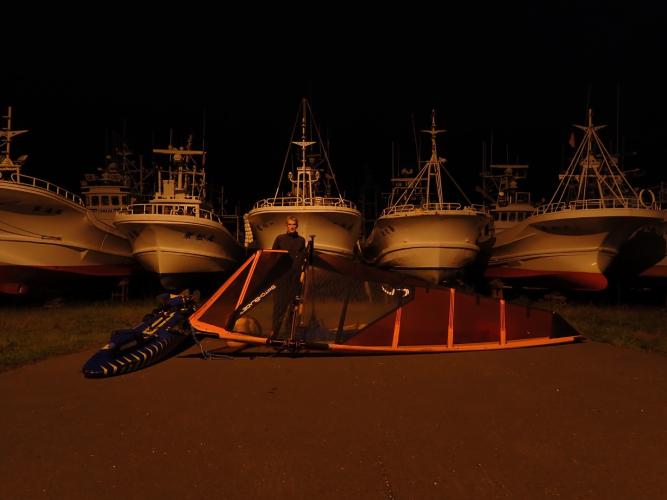 A pic from Shiranuka, but not on the website until now.
A pic from Shiranuka, but not on the website until now.
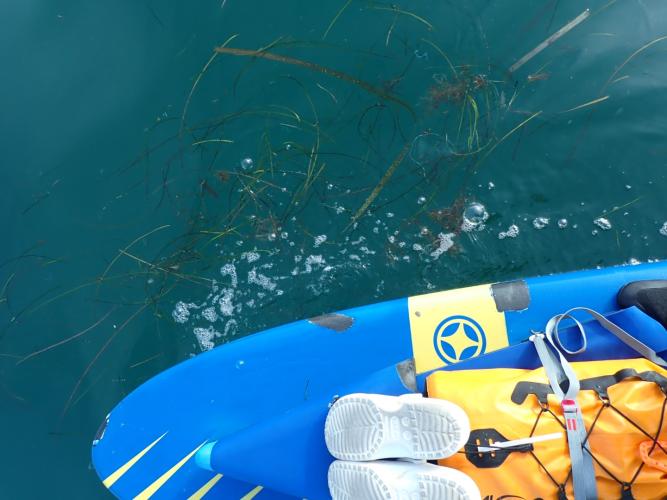 Did I mention the weed?
Did I mention the weed?
 Coffee and conversation at Katsurakoi
Coffee and conversation at Katsurakoi
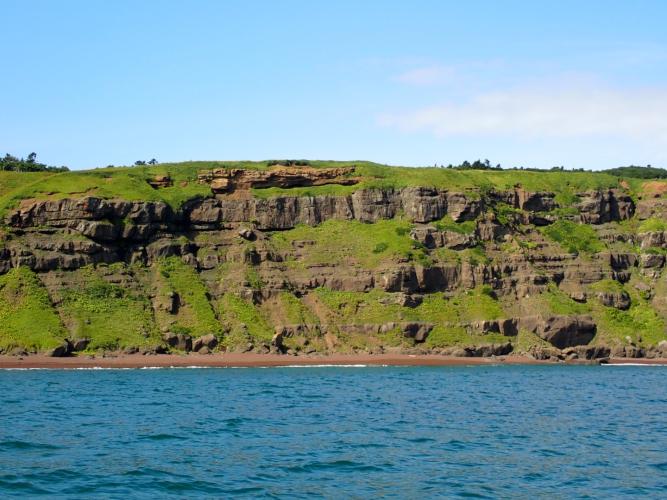 Nice colours on a clear day.
Nice colours on a clear day.
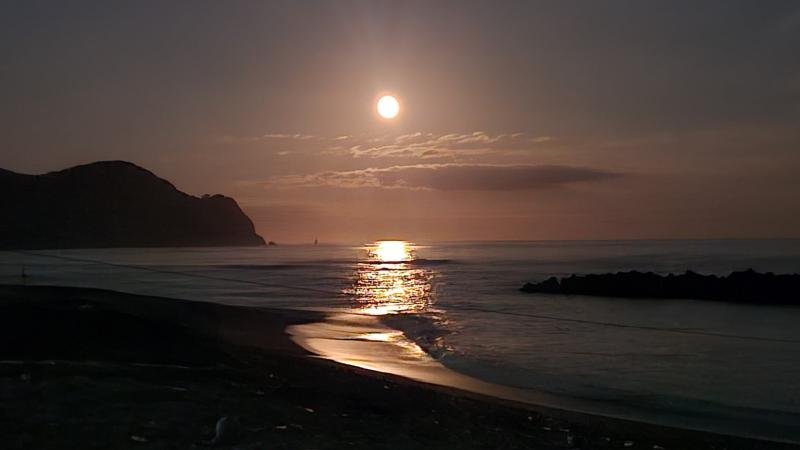 Moonlight over Pontomari.
Moonlight over Pontomari.
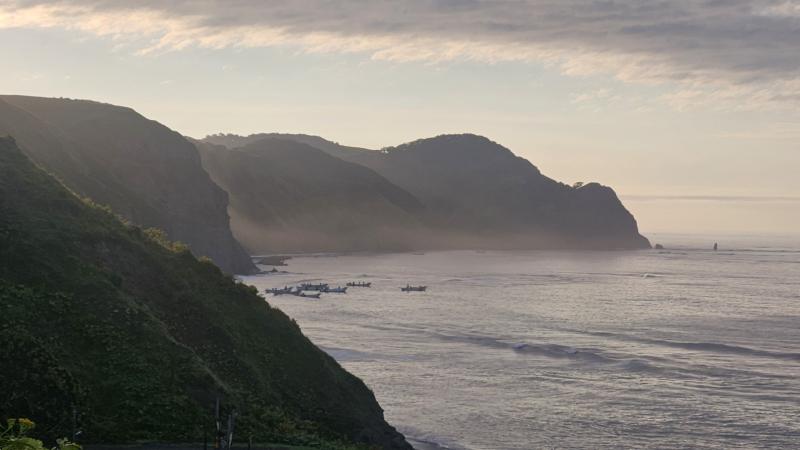 A cluster of konbu boats (there are other clusters elsewhere).
A cluster of konbu boats (there are other clusters elsewhere).
 Access to the beach via tied-together ladders!
Access to the beach via tied-together ladders!
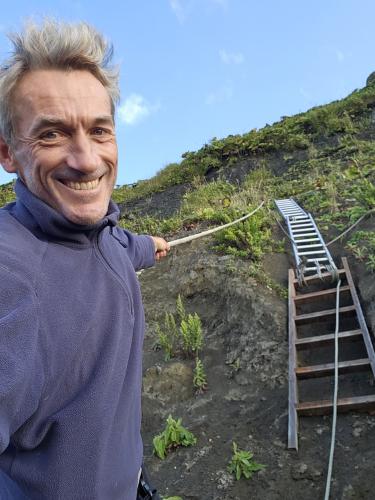 Good way to start the day!
Good way to start the day!
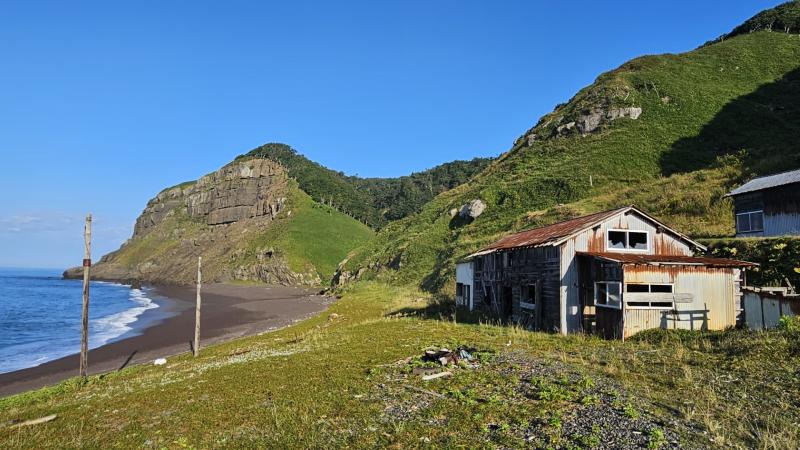 One of the empty beach houses.
One of the empty beach houses.
 Inside, some details were untouched.
Inside, some details were untouched.
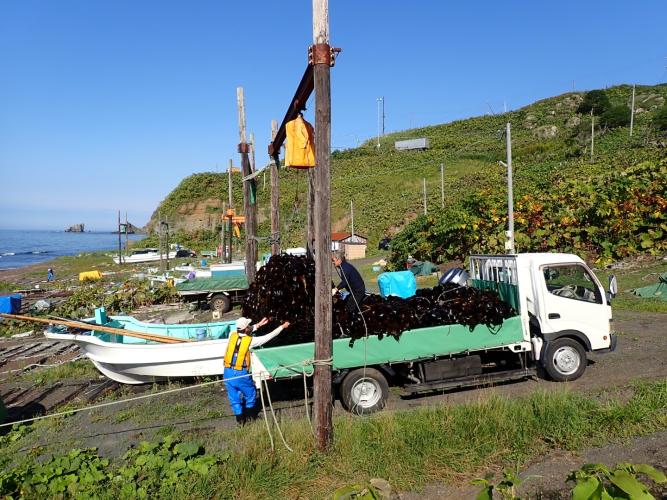 Konbu transfer to truck, before going uphill to the drying "fields".
Konbu transfer to truck, before going uphill to the drying "fields".
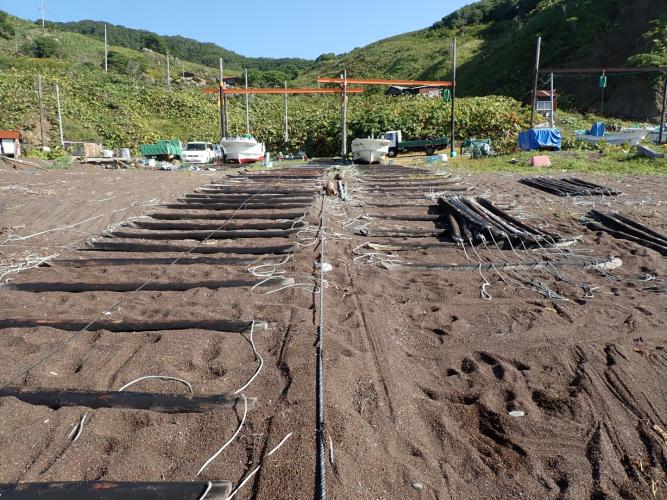 Boat launch and recovery ramps on the sand.
Boat launch and recovery ramps on the sand.
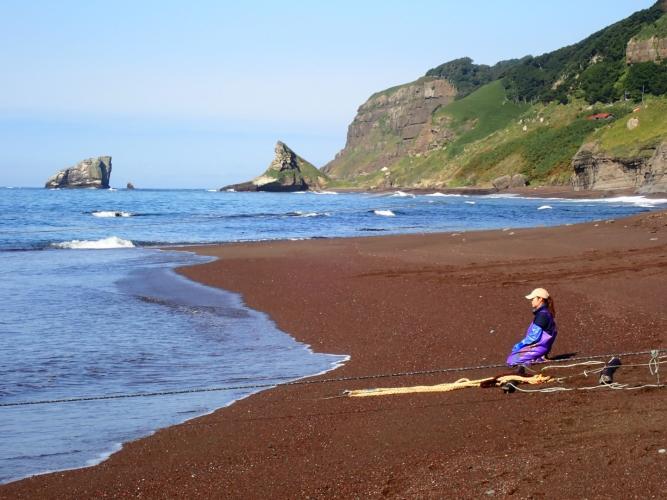 Awaiting the return of (I assume) a particular boat.
Awaiting the return of (I assume) a particular boat.
 The kelp harvest is a community operation. Each of these small villages has a flotilla of boats. They go out on the siren and come back on the siren in what is a highly orchestrated procedure. For a few hours, at least 30 boats were busily collecting along this stretch of coast.
The kelp harvest is a community operation. Each of these small villages has a flotilla of boats. They go out on the siren and come back on the siren in what is a highly orchestrated procedure. For a few hours, at least 30 boats were busily collecting along this stretch of coast.
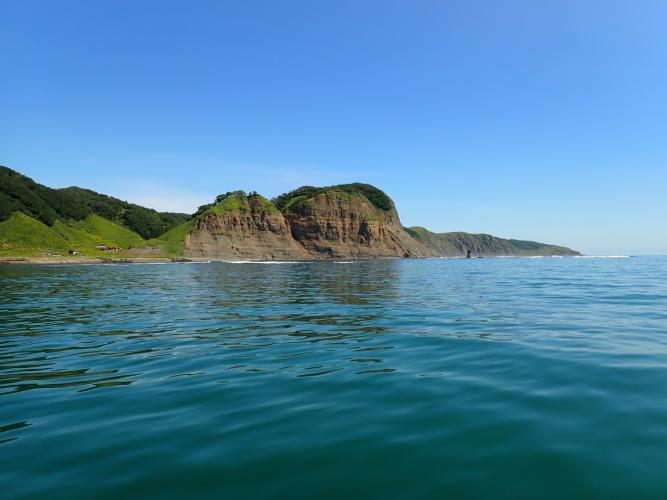 Visibility isn't often good enough to see it, but the coast is very pretty!
Visibility isn't often good enough to see it, but the coast is very pretty!
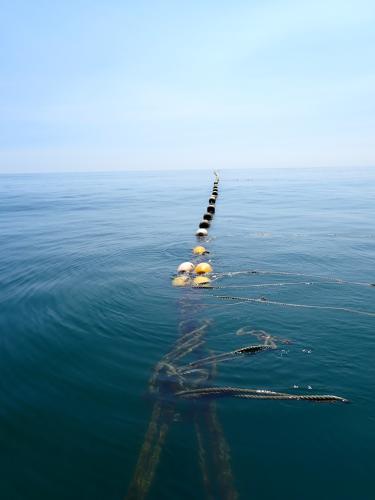 Net/line. I think this is for kombu (kelp).
Net/line. I think this is for kombu (kelp).
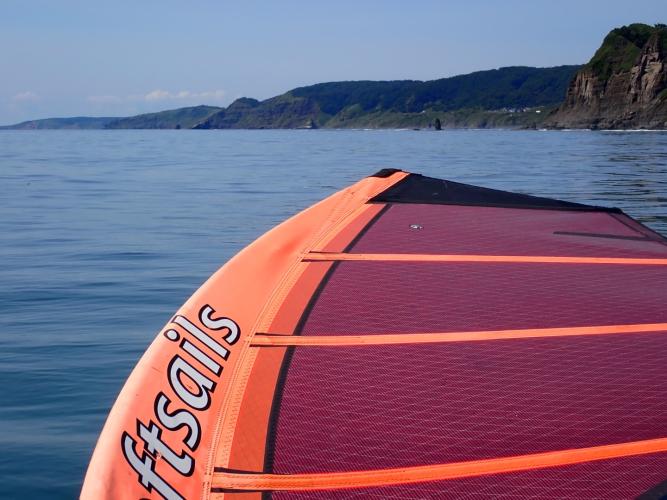 A glance back, when paddling over glass/yoghurt.
A glance back, when paddling over glass/yoghurt.
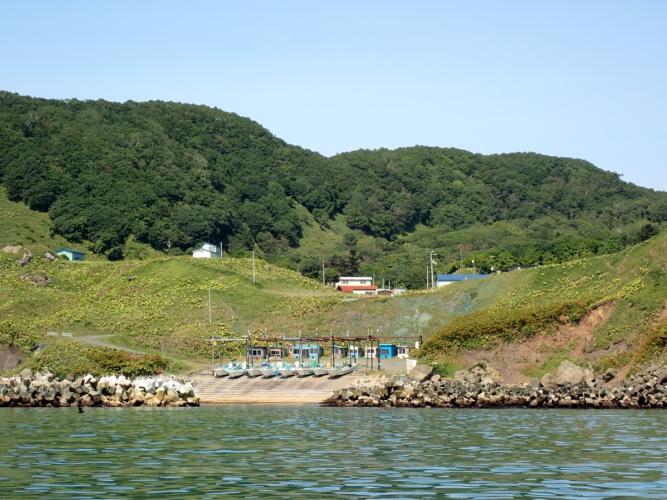 Another picturesque konbu community.
Another picturesque konbu community.
 Daikoku island. Landing not allowed without permission. Also no konbini.
Daikoku island. Landing not allowed without permission. Also no konbini.
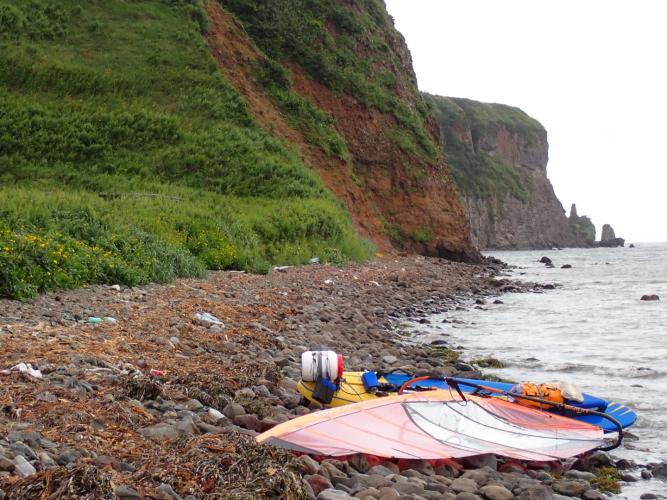 Route inside a handy island. Good place to east an onigiri (rice ball with a filling of some sort).
Route inside a handy island. Good place to east an onigiri (rice ball with a filling of some sort).
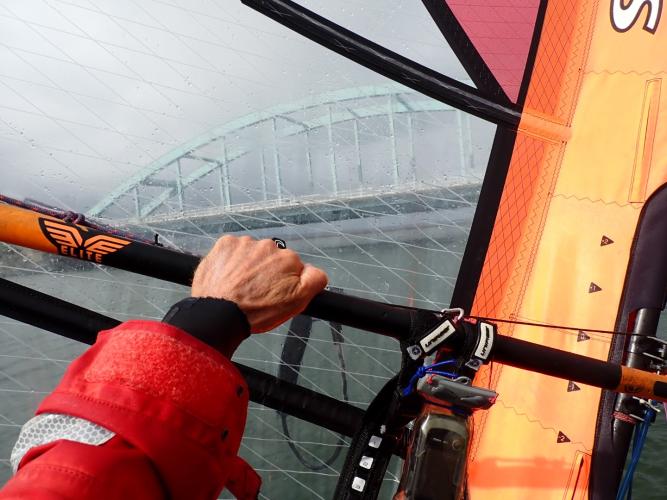 Fun cut through before stopping at Kiritappu
Fun cut through before stopping at Kiritappu
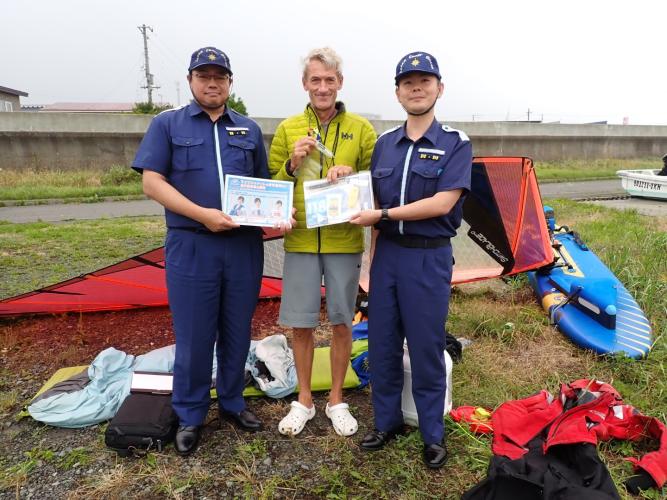 The Nemuro Coastguard deliver their message: (1) Wear a lifejacket. (2) Secure your comms! (3) In emergency, call coastguard on 118.
The Nemuro Coastguard deliver their message: (1) Wear a lifejacket. (2) Secure your comms! (3) In emergency, call coastguard on 118.